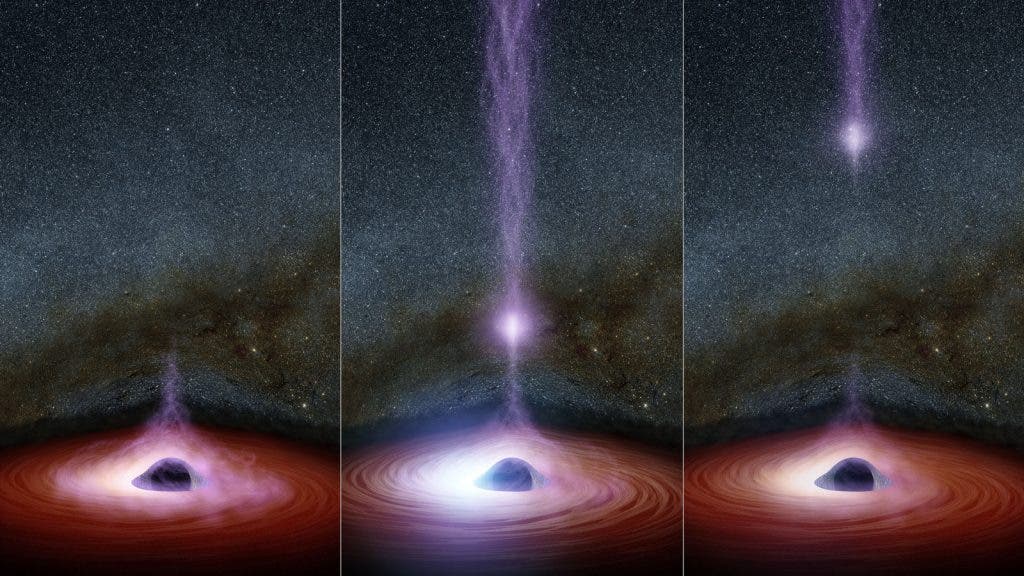At one point, black holes seemed completely beyond understanding, but now, thanks to sustained research and more advanced equipment, researchers are learning more and more about them. Just like predicted, astronomers observed a flare ejected out of a black hole… but they don’t know exactly why.

“This is the first time we have been able to link the launching of the corona to a flare,” said Dan Wilkins of Saint Mary’s University in Halifax, Canada, lead author of a new paper on the results appearing in the Monthly Notices of the Royal Astronomical Society. “This will help us understand how supermassive black holes power some of the brightest objects in the universe.”
Black holes are black because their gravity is so huge that nothing can escape them if it gets close enough – not even light. So in a way, it’s extremely strange that black holes would eject something – especially supermassive black holes, the biggest and “heaviest” black holes.
The thing is, while supermassive black holes may not give out any light themselves, they are surrounded by disks of incandescent, glowing material. As this disk interacts with the black hole’s gravity, it emits out different types of light. Another type of radiation near the black hole is the corona. The corona is made up of of highly energetic particles that generate X-ray light, but details about their appearance, and how they form, are unclear.
This new data seems to support one of the hypotheses: the lamppost model. According to the lamppost model, they are compact sources of light, similar to light bulbs, that sit above and below the black hole, along its rotation axis. A supermassive black hole, Markarian 335, or Mrk 335, located 324 million light-years away, in the center of a galaxy, may hold the vital puzzle piece.
“Something very strange happened in 2007, when Mrk 335 faded by a factor of 30. What we have found is that it continues to erupt in flares but has not reached the brightness levels and stability seen before,” said Luigi Gallo, the principal investigator for the project at Saint Mary’s University. Another co-author, Dirk Grupe of Morehead State University in Kentucky, has been using Swift to regularly monitor the black hole since 2007.
But although not constant, Mrk335 still has some violent ejections; in 2014, astronomers observed a huge flare. But what makes it even more interesting is that the corona initially collapsed into the hole and then was ejected, escaping the black hole.
“The corona gathered inward at first and then launched upwards like a jet,” said Wilkins. “We still don’t know how jets in black holes form, but it’s an exciting possibility that this black hole’s corona was beginning to form the base of a jet before it collapsed.”
So, now we know what the flare is… we just need to know why it happened. It’s a black-hole-teaser.
“The nature of the energetic source of X-rays we call the corona is mysterious, but now with the ability to see dramatic changes like this we are getting clues about its size and structure,” said Fiona Harrison, the principal investigator of NuSTAR at the California Institute of Technology in Pasadena, who was not affiliated with the study.


